#black women matter
Text
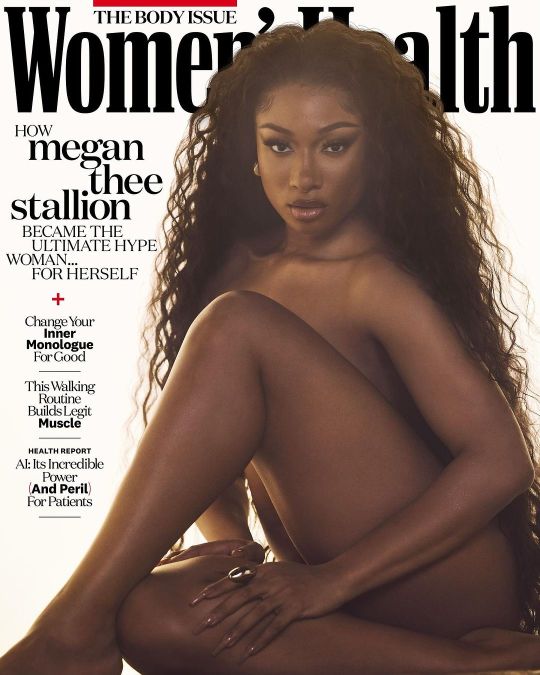





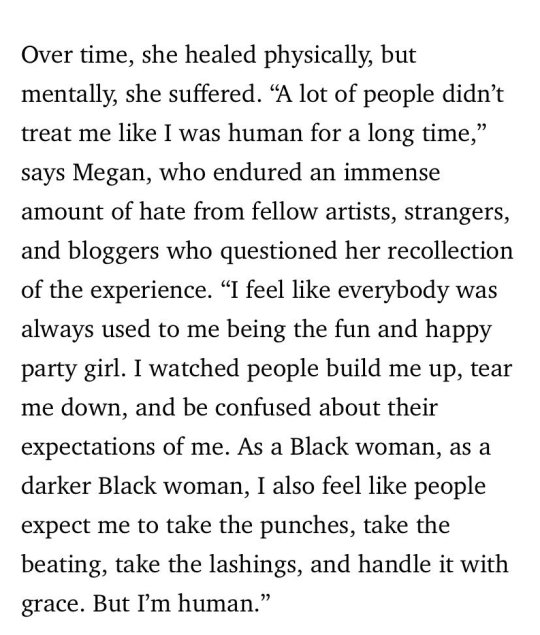
IG: theestallion
Thee Hot Girl Coach for thee cover of Women’s Health Magazine 💙💪🏽
.
.
.
Credits:
Editor-in-chief: lizplosser
Photographer: ramonarosales
Interview: somekindofemme
Stylist: kgsaladino
Hair: kellonderyck
Makeup: lorvida
Manicurist: nailsdid.byginger
Set Designer: carlosanthonylopez of winstonstudios
Design Director: betsyhalsey
Executive Visual Director: fvleroux
Entertainment Director: maxwelllosgar
Production: kindlyproductions
PR Agency: VitalVersatility
Hearst Magazine Entertainment: hmebookings
#megan thee stallion#meg thee stallion#thee stallion#women's health#women's mental health#soft life#soft girl#black girl moodboard#black girl aesthetic#black women moodboard#black women aesthetic#soft black girls#soft black women#black women luxury#black girl luxury#beautiful black girl#black girl beauty#beautiful black women#black women beauty#mental health awareness#black women magic#black women matter#black girl magic#women deserve better
734 notes
·
View notes
Text
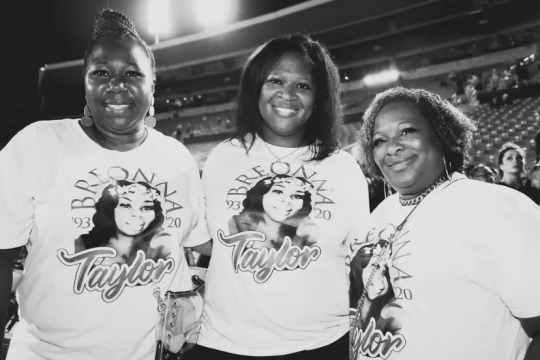
The Renaissance World Tour: Show 26 - L&N Federal Credit Union Stadium - Louisville, Kentucky (7/17/23).
I know Black Parade felt even more special that night, because Breonna Taylor’s (victim of police brutality) family was there. Beyoncé had her fist raised up in the air longer than usual. ✊🏽
#beyoncé#beyonce#beyhive#breonna taylor#justice for breonna#black lives matter#black women matter#black parade#louisville kentucky#renaissance world tour
341 notes
·
View notes
Text
PLEASE TAKE THE TIME TO LISTEN AND SHARE THIS STORY 🙏🏾. This is the story of my mother Debrah Daniels who has been held in jail in riverside county since March 2023 for aiding and protecting her grandchild (which is my niece) from two girls that attacked her at her job and even sliced her arm with a pocket knife. Those two women have been walking around free with no repercussions for what they’ve done while my mother has been in jail for 4 months. They are trying to OVERCHARGE my mother with 1st degree attempted murder among other charges and stick her with a life sentence. My mother has been underrepresented by a public defender who did not fight for her during the pre trail and now that we were finally able to provide her with a lawyer her fate is in the hands of the jury now. She has not received ANY support from her family except for me and my older sister, our family has turned their backs on us and has not contributed anything to help, they don’t even ask how’s she’s doing. Our last hope is to rely on the kindness and support from strangers to help spread awareness of my mothers story and put pressure on the courts for their injustice. This is our last hope in bringing my mother home.
If you would like to support and share this story please check out the social media pages we have created and use the hashtag #justice4debrahdaniels. Please follow, like, comment, and share the videos detailing the case to help bring this story to light. Please help us bring my mom home.
Facebook:

Twitter: @justice4debrah
Instagram: justice4debrahdaniels
Tiktok:
#long post#please help#please boost this#boost this#blacklivesmatter#black lives matter#black women matter#black tumblr#black community#share this#injustice#spread this#tiktok#facebook#instagram#twitter#justice4debrahdaniels#california#criminal justice#justice for Debrah#free Debrah daniels#say it til it’s backwards#say her name#please read
364 notes
·
View notes
Text
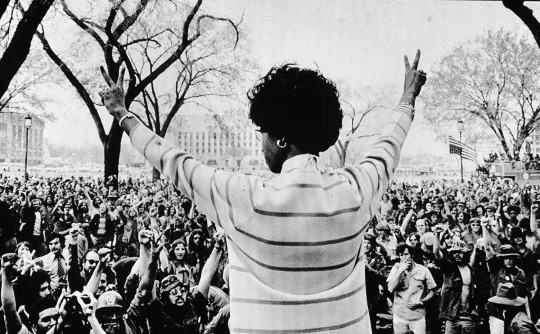
Black women have made important contributions to the United States throughout its history. However, they are not always recognized for their efforts, with some remaining anonymous and others becoming famous for their achievements. In the face of gender and racial bias, Black women have broken barriers, challenged the status quo, and fought for equal rights for all. The accomplishments of Black female historical figures in politics, science, the arts, and more continue to impact society.
Marian Anderson (Feb. 27, 1897–April 8, 1993)

Underwood Archives / Getty Images
Contralto Marian Anderson is considered one of the most important singers of the 20th century. Known for her impressive three-octave vocal range, she performed widely in the U.S. and Europe, beginning in the 1920s. She was invited to perform at the White House for President Franklin Roosevelt and First Lady Eleanor Roosevelt in 1936, the first African American so honored. Three years later, after the Daughters of the American Revolution refused to allow Anderson to sing at a Washington, D.C. gathering, the Roosevelts invited her to perform on the steps of the Lincon Memorial.
Anderson continued to sing professionally until the 1960s when she became involved in politics and civil rights issues. Among her many honors, Anderson received the Presidential Medal of Freedom in 1963 and a Grammy Lifetime Achievement Award in 1991.
Mary McLeod Bethune (July 10, 1875–May 18, 1955)
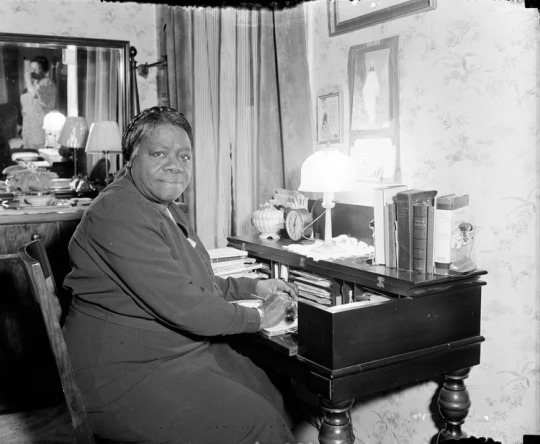
PhotoQuest / Getty Images
Mary McLeod Bethune was an African American educator and civil rights leader best known for her work co-founding the Bethune-Cookman University in Florida. Born into a sharecropping family in South Carolina, the young Bethune had a zest for learning from her earliest days. After stints teaching in Georgia, she and her husband moved to Florida and eventually settled in Jacksonville. There, she founded the Daytona Normal and Industrial Institute in 1904 to provide education for Black girls. It merged with the Cookman Institute for Men in 1923, and Bethune served as president for the next two decades.
A passionate philanthropist, Bethune also led civil rights organizations and advised Presidents Calvin Coolidge, Herbert Hoover, and Franklin Roosevelt on African American issues. In addition, President Harry Truman invited her to attend the founding convention of the United Nations; she was the only African American delegate to attend.
Shirley Chisholm (Nov. 30, 1924–Jan. 1, 2005)
Don Hogan Charles / Getty Images
Shirley Chisholm is best known for her 1972 bid to win the Democratic presidential nomination; she was the first Black woman to make this attempt in a major political party. However, she had been active in state and national politics for more than a decade and had represented parts of Brooklyn in the New York State Assembly from 1965 to 1968. She became the first Black woman to serve in Congress in 1968. During her tenure, she co-founded the Congressional Black Caucus. Chisholm left Washington in 1983 and devoted the rest of her life to civil rights and women's issues.
Althea Gibson (Aug. 25, 1927–Sept. 28, 2003)

Reg Speller / Getty Images
Althea Gibson started playing tennis as a child in New York City, winning her first tennis tournament at age 15. She dominated the American Tennis Association circuit, reserved for Black players, for more than a decade. In 1950, Gibson broke the tennis color barrier at Forest Hills Country Club (site of the U.S. Open); the following year, she became the first African American to play at Wimbledon in Great Britain. Gibson continued to excel at the sport, winning both amateur and professional titles through the early 1960s.
Dorothy Height (March 24, 1912–April 20, 2010)

Chip Somodevilla / Getty Images
Dorothy Height has been described as the godmother of the women's movement because of her work for gender equality. For four decades, she led the National Council of Negro Women (NCNW )and was a leading figure in the 1963 March on Washington. Height began her career as an educator in New York City, where her work caught the attention of Eleanor Roosevelt. Beginning in 1957, she led the NCNW and also advised the Young Women's Christian Association (YWCA). She received the Presidential Medal of Freedom in 1994.
Rosa Parks (Feb. 4, 1913–Oct. 24, 2005)
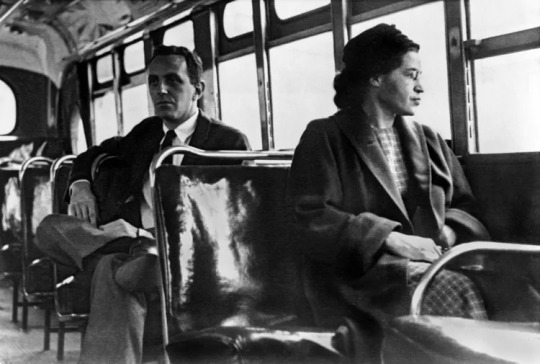
Underwood Archives / Getty Images
Rosa Parks became active in the Alabama civil rights movement after marrying activist Raymond Parks in 1932. She joined the Montgomery, Alabama, chapter of the National Association for the Advancement of Colored People (NAACP) in 1943 and was involved in much of the planning that went into the famous bus boycott that began the following decade. Parks is best known for her December 1, 1955, arrest for refusing to give up her bus seat to a White rider. That incident sparked the 381-day Montgomery Bus Boycott, which eventually desegregated that city's public transit. Parks and her family moved to Detroit in 1957, and she remained active in civil rights until her death.
Augusta Savage (Feb. 29, 1892–March 26, 1962)
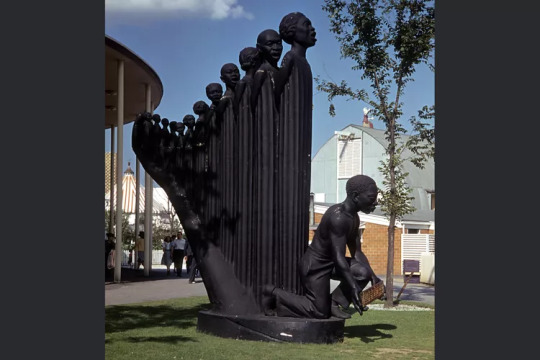
Archive Photos / Sherman Oaks Antique Mall / Getty Images
Augusta Savage displayed an artistic aptitude from her youngest days. Encouraged to develop her talent, she enrolled in New York City's Cooper Union to study art. She earned her first commission, a sculpture of civil rights leader W.E.B. Du Bois, from the New York library system in 1921, and several other commissions followed. Despite meager resources, she continued working through the Great Depression, making sculptures of several notable Black people, including Frederick Douglass and W. C. Handy. Her best-known work, "The Harp," was featured at the 1939 World's Fair in New York, but it was destroyed after the fair ended.
Harriet Tubman (1822–March 20, 1913)

Library of Congress
Enslaved from birth in Maryland, Harriet Tubman escaped to freedom in 1849. The year after she arrived in Philadelphia, Tubman returned to Maryland to free her family members. Over the next 12 years, she returned nearly 20 times, helping more than 300 enslaved Black people escape bondage by ushering them along the Underground Railroad. The "railroad" was the nickname for a secret route that enslaved Black people used to flee the South for anti-slavery states in the North and to Canada. During the Civil War, Tubman worked as a nurse, a scout, and a spy for Union forces. After the war, she worked to establish schools for formerly enslaved people in South Carolina. In her later years, Tubman also became involved in women's rights causes.
Phillis Wheatley (May 8, 1753–Dec. 5, 1784)

Culture Club/Hulton Archive/Getty Images
Born in Africa, Phillis Wheatley came to the U.S. at age 8, when she was captured and sold into enslavement. John Wheatley, the Boston man who enslaved her, was impressed by Phillis' intellect and interest in learning, and he and his wife taught her to read and write. The Wheatleys allowed Phillis time to pursue her studies, which led her to develop an interest in poetry writing. A poem she published in 1767 earned her much acclaim. Six years later, her first volume of poems was published in London, and she became known in both the U.S. and the United Kingdom. The Revolutionary War disrupted Wheatley's writing, however, and she was not widely published after it ended.
Charlotte Ray (Jan. 13, 1850–Jan. 4, 1911)
Charlotte Ray has the distinction of being the first African American woman lawyer in the United States and the first woman admitted to the bar in the District of Columbia. Her father, active in New York City's Black community, made sure his young daughter was well educated; she received her law degree from Howard University in 1872 and was admitted to the Washington, D.C., bar shortly afterward. Both her race and gender proved to be obstacles in her professional career, and she eventually became a teacher in New York City instead.
#10 of the Most Important Black Women in U.S. History#Black Women#Black Women Matter#Black Lives Matter#us history
214 notes
·
View notes
Text

446 notes
·
View notes
Text
Okay, this might be controversial, but …
We all know and see how feminism — mainstream feminism — began to more and more include and revolve around men, although feminism is supposed to be specifically for women‘s rights.
I could say a lot about how mainstream "feminism" has become just another men‘s rights movement in disguise, BUT that‘s not the point of this post.
What came to my mind long ago is that every other social justice movement centers men, too. Now I‘m not saying that men can‘t be oppressed based on ethnicity, sexuality, class, nationality, disability etc., and they certainly are part of movements about these issues. (not comparable to FEMinism, of course, since men are NOT oppressed on the basis of their sex — even intersectional feminism is only for WOMEN as they face unique oppression for being female, and oppressive systems are the result of male supremacy)
However, the more I observe what‘s going on, the more I notice that men are the center of these movements although it affects women just as much, and even more because misogyny and racism, homophobia etc. intertwine.
So, we got an LGBTQIAwhatever+ movement which is more concerned with male sexuality and male feelings than women‘s voices and safety. Not only in terms of the gender debate and the fact that women get dehumanized (e.g. "menstruators", "birthing people", "bonus hole") and that their sex-based reality gets erased, but also when it comes to how LGBTQIAwhatever+ rights are framed. For example, "kink" has been heavily pushed forward by and centered around the men, even during the beginning of the movement, although lesbian and bisexual women have always been critical of it, yet it‘s now the public image we get associated with as well. Women are hoping for solidarity with the men, but the men somehow still don‘t bother to work on their misogyny. It‘s inarguable that while the women and men share the oppression through homophobia — and don’t get me wrong, I think that all LGB people should fight against homophobia together — the women are still oppressed by the men due to misogyny.
We also have a Black Lives Matter movement, which has thankfully raised a lot of awareness since it started and is an integral part of social justice. However, the phenomenon remains the same: Men are centered, whereas the women have to mostly fend for themselves. I‘m not comparing case X to case Z or something like that, but the outrage when a black woman gets violated and faces misogynoir is very little compared to cases of while man on black man violence. I‘m not saying "pay less attention to victims who are black men!", I‘m saying "pay more attention to victims who are black women!" (same goes for racism and hate crimes against other ethnicities). And I‘m not glossing over the fact that there are MANY amazing black women who raise their voices and do meaningful activism, I‘m just saying that they don’t receive the same platform as their male counterparts, face misogyny (including heavy sexualization) from both black and white men and often feel the need to give up some space for the men, as apparently women can‘t talk about the female experience exclusively in the society we live in without getting scrutinized.
Then we got the Disability Rights Movement, which is somehow less popular but still as important. While most of the rights and affirmations are for both men and women alike, the men are still seen as a priority, both compared to other disabled women and in some cases also non-disabled women. Many disabled women have spoken about how disabled men still sexualize them and subject them to their misogyny, and we even got to the point where disabled men are supposed to be given access to rape prostitutes (yes, prostitution is paid rape even when you‘re disabled) whilst disabled women barely have the right to same-sex intimate care and are also more likely to get medically mistreated.
I could go on about how poor/homeless women are belittled and forced into prostitution and therefore overlooked compared to poor/homeless men (the notion that there are more poor/homeless men than women and hence men have it worse is false as the poor/homeless women end up as sex trafficking victims, especially during war times, or at least get coerced into enduring paid rape), how the "body positivity" movement has become another men‘s sexual fantasy, how discussions about religious indoctrination and extremism usually revolve around the boys and men who get dragged into becoming violent fanatics whilst the girls and women are expected to have empathy for their abusers, how men assert their male privilege shamelessly and regardless of all these aspects above …
But in the end, what becomes clear, is that men enthusiastically use the tools of patriarchy even when fighting against other forms of social injustice, and we as women deserve so much better than this — and this is also why we need to unite ourselves and prioritize one another.
#women deserve better#radfem#radblr#radical feminism#feminism#radfems do touch#radfems do interact#radfems please touch#womens rights#sex based rights#social justice#black women matter#lesbians deserve better#disability awareness#anti prostitution#rape culture#male privilege#male violence against women#protect girls#sisterhood
82 notes
·
View notes
Text
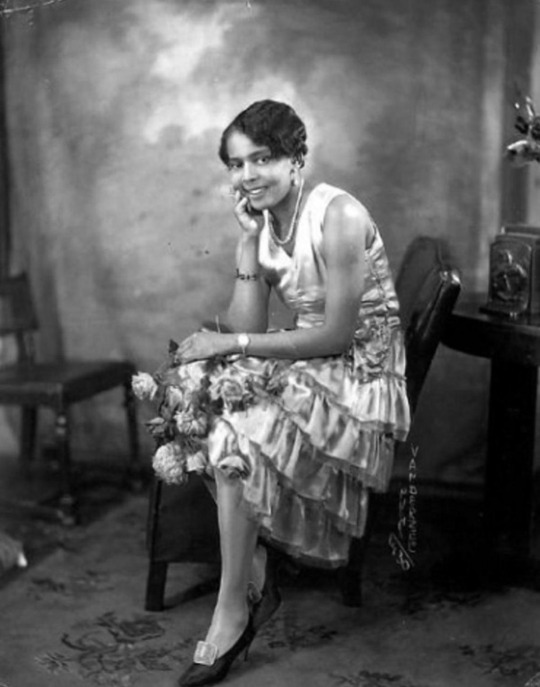

Esther Jones was known on stage by many names, including “Baby Esther,” “Little Esther,” “Farina’s Kid Sister,” and “Miniature Florence Mills,” is widely, although not universally, credited with being the inspiration for the Betty Boop cartoon character. Jones was born Esther Lee Jones in 1918 in Chicago, Illinois, to William Jones and Gertrude Jones.
In 1928, the Jones family moved to Harlem, New York. At seven, Jones was later known for adopting the popular singing style, scat, which emphasized the baby-style of “b” and “d” sounds and nonsense syllables such as Boo-Boo-Boo’ and ‘Doo-Doo-Doo.’ Consequently, she was a sought-after child performer in the city, and was a fixtured entertainer in the famous Cotton Club and the Everglades Nightclub in New York City during the latter years of the Harlem Renaissance. She added to her entertainment fame by become an extraordinary black-bottom dancer.
In 1929, Jones was taken to Spain, where she was called “La Pandilla.” Later she performed before Sweden’s Queen Sophie Marie Viktoria and King Gustaf V, in Stockholm. Despite her notoriety, she also experienced blatant racism when denied a glass of milk in an American-operated restaurant in Stockholm. The business, however, was forced to close after her treatment there became public knowledge.
Jones performed at the Moulin Rouge, Casino de Paris, and the Empire in Paris, France. There she was dubbed the “Miniature Josephine Baker.” While in Europe, she was paid an average $750 per week for her performances and by age 11, Jones was the highest-paid child on stage globally. After performing, Jones would go backstage to play with dolls. Whenever she performed, both parents were in attendance.
In 1930, Fleisher Studios in Hollywood introduced the cartoon character Betty Boop. Jones, however, received no royalties or performing credits despite the fact that a lawsuit would eventually expose Betty Boop’s true origins. The lawsuit ironically was brought by Helen Kane, a white performer, who sued Fleisher Studios for appropriating her “Betty Boop” character without her permission and without the payment of royalties. Over the course of the Fleisher Studios v. Kane trial, it was revealed that Kane had begun mimicking Jones’ scat act and even sang the same song, “I Want to Be Loved By You’ including the “Boop-Boop-a-Doop” reference. When Kane lost the lawsuit, other studios felt emboldened to promote the Betty Boop character but it recognized neither Kane or Jones as the source.
In 1934, Jones, now 16, performed in Philadelphia at a midnight benefit performance for the NAACP. That same year, she gave a stellar performance at the American Embassy in Rio de Janeiro, Brazil at the request of then Ambassador Jefferson Caffery. Brazil’s President Getúlio Dornelles Vargas, was in the audience and praised the performance and performer.
By 1940, however, the entertainment career of now 22-year-old Esther Jones, was over. She was no longer a child singing or dancing sensation. Esther Jones, now widely credited with influencing the iconic sex symbol Betty Boop, died in 1984 in New York City from liver and kidney complications. She was 66. Regardless of her role in the development of the Betty Boop cartoon character, Jones should be remembered as a child star with a brief but remarkable career in the entertainment industry.
•••
Esther Jones fue conocida en el escenario por varios nombres, incluyendo: “Baby Esther (Bebé Esther),” “Little Esther (Pequeña Esther),” “Farina’s Kid Sister (Hermanita de Farina),” y “Miniature Florence Mills (Florence Mills en miniatura). Generalmente, pero no universalmente, acreditada con ser la inspiración del personaje de caricatura, Betty Boop. Esther Lee Jones, nació en 1918 en Chicago, Illinois a sus padres William Jones y Gertrude Jones.
En 1928, la familia Jones se mudó a Harlem, Nueva York. A la edad de siete años, Jones fue reconocida por adoptar el famoso estilo de canto llamado ‘scat’ y resaltaba los sonidos de bebé que sonaban con ‘b’ y ‘d’, junto con sílabas que no tenían sentido como: Boo-Boo-Boo’ y ‘Doo-Doo-Doo.’ Consecuentemente, esto la convirtió en la artista infantil más buscada de la ciudad. Se convirtió en una presentadora fija en el famoso Cotton Club y el club nocturno Everglades en la ciudad de Nueva York, esto fue durante los últimos años del Renacimiento de Harlem. Le agregó más a su fama cuando se convirtió en una bailarina de black bottom (un paso de baile relacionado con el jazz tradicional).
En 1929, Esther fue llevada a España, dónde le llamaban “La Pandilla”. Poco después de eso, hizo una presentación en Stockholm frente a la Reina Sophie Marie Viktoria y el Rey Gustaf V de Suecia. A pesar de su notoriedad, también experimentó racismo muy evidente cuando se le negó un vaso con leche en un restaurante operado por americanos en Stockholm. Sin embargo, una vez que el trato que se le dio se hizo público, obligaron a que el negocio cerrara.
Jones se presentó en Moulin Rouge, Casino de Paris, and the Empire, ubicados en Paris, Francia. Es aquí donde le dieron el apodo de “Josephine Baker en miniatura”. Mientras que estuvo en Europa se le pagaban aproximadamente $750 por semana y con solo once años de edad, Jones era la artista infantil mejor pagada a nivel global. Después de sus presentaciones, ella se iba tras bastidores a jugar con muñecas. Sus padres siempre estaban presentes para las presentaciones.
En 1930, Fleisher Studios de Hollywood introdujo un nuevo personaje, Betty Boop. Y a pesar de que una demanda demostraría el verdadero origen de la caricatura, Jones nunca recibió crédito o derechos. Irónicamente, la demanda fue interpuesta por Helen Kane, una artista que había demandado a Fleisher Studios por apropiarse de su personaje “Betty Boop” sin su permiso y sin pagarle sus derechos. Durante el juicio Fleisher Studios v. Kane, se reveló que Kane había comenzado a imitar el acto de scat de Jones y que incluso cantaba las mismas canciones como ‘I Want to Be Loved By You’ incluyendo la referencia: “Boop-Boop-a-Doop”. Cuando Kane perdió la demanda, otros estudios se animaron a promover al personaje Betty Boop, sin reconocer a Kane o Jones como la fuente.
En 1934, Jones, ahora con dieciséis años de edad, hizo una presentación en Philadelphia para una noche de beneficencia de la Asociación Nacional para el Progreso de la Gente de Color (NAACP). Ese mismo año, a petición del embajador Jefferson Caffery, hizo una presentación estelar en la embajada americana ubicada en Rio de Janeiro, Brazil. El presidente Getúlio Dornelles Vargas se encontraba en la audiencia, elogió la presentación y también a la presentadora.
Para 1940, con veintidós años de edad, la carrera de Esther Jones en la industria del entretenimiento, ya se había acabado. Ya no era una sensación infantil que bailaba y cantaba. Esther Jones, ahora extensamente acreditada con ser la influencia del símbolo sexual, Betty Boop, murió en 1984 en la ciudad de Nueva York, por complicaciones renales y hepaticas. Tenía 66 años. Independiente de su rol en el desarrollo del personaje, Betty Boop; Esther Jones debería de ser recordada como una estrella infantil que tuve una carrera corta pero extraordinaria.
#culture#knowyourhistory#like#follow#newpost#historyfacts#blackgirlmagic#black women#black women matter#blacklivesmatter#blacklivesalwaysmatter#english#spanish#blackhistory#history#share#read#blackpeoplematter#blackhistorymonth#black lives matter#blackgirlsread#blackbloggers#blackownedandoperated#black girl icons#black music#b#black history is american history#blm#betty boop#knowledgeisfree
198 notes
·
View notes
Text
As I’ve grown older as a woman, I’ve begun to understand how cheap it is and how dehumanizing it can be, to only be seen or lusted for because of your outer beauty.
When thinking of the opportunities and experiences that were presented and given to me because of the privilege that comes with being very beautiful, I often am hit with the reality that most people who provided such experiences only wanted me to show up as who they wanted me to be. Rather, it was being acquired for love, sexual desires, a void, or to be used; a multitude of them preferred me as their premeditated idea. Ideas that were principally attached to hypersexualization, fantasies, patriarchy, and mainly how I can be used to make their lives more pleasurable. As I come more into this womanhood, I further realize the privilege of beauty is a double-edged sword. I too fell victim to the belief that, as a woman, I am most worthy when I make myself palatable for others to indulge in me. The more I unravel this illusion, the more I've come to know that the best thing I’ve done for myself as a woman is to choose what is most authentic to my femininity and define what that means for me. Much as I do love my outer beauty, there is no comparison—and I mean absolutely no comparison—to the beauty that lies behind my flesh. I also know that not everyone will see it that way, and I’ve begun to truly understand how amazing it is to be deliberately seen and desired for what doesn't just meet the eye. There is something very honorary about knowing that the people who do see me will make space for me the way I make space for myself.
51 notes
·
View notes
Text
Not against ppl showing love for Black women at all, but I do notice that whenever I photosets of Black women, it’s rare to ever see fat women, disabled women and trans women.
24 notes
·
View notes
Text

Black women are disappearing at an alarming rate. In 2022 alone, more than 97,000 Black women were reported missing, according to the 2022 NCIC Missing Person and Unidentified Person Statistics, and we believe there are even more. Yet their stories are not making the national headlines. Carlee Russell’s case going viral was an anomaly that we had hoped would change that and spark nationwide interest in our cases.
Instead, it led to backlash due to the outcome. We’ve heard it all, from people saying they will never share a case of a missing Black woman again to resentment and anger, and even a halo of distrust that has others in our community looking at every Black missing woman’s story with a side-eye.
The sad fact is that we can’t afford to look the other way because the statistics and reality of the number of missing Black women is too glaring to ignore.
When I started as the co-founder and publicist for the Black and Missing Foundation, families were reaching out to us in desperation, seeking any help to bring awareness to their loved one’s disappearance. We were their last hope because no one was taking their cases seriously. There was a lack of media coverage, law enforcement support, and community engagement was sparse and disheartening. Although over the last 15 years, the Black and Missing Foundation has made some progress with national and local media partnerships, it is still not enough, with the number of missing Black women continuing to rise.
According to the Urban Institute, only seven percent of missing person cases involving people of color receive national media coverage. In those early years, beyond the Black press, I can’t tell you how many times my pleas for media coverage were met with silence or disinterest despite Black women representing 18 percent of all missing persons cases.
What I didn’t know in those early years of the foundation that I know now, is that Black women are often targeted, particularly regarding sex trafficking. Interviews with predators and pimps revealed that they target Black women because they believe no one will look for them and the penalty will not be as harsh for trafficking them. Also, Black women are not seen as victims. They are often stereotyped as promiscuous and responsible for their disappearance. Their white counterparts, however are viewed as a damsel in distress, needing to be rescued.
Without media coverage to raise awareness, the cases of missing Black women often fall through the cracks. Media coverage sets a sense of urgency in motion, galvanizing the community and putting pressure on law enforcement to add resources to the case, which can result in a quicker recovery. Sadly, our cases remain open four times longer than our white counterparts.
Missing Black women are rarely front-page news; sadly, many of us don’t even know their names. Tarasha Benjamin has been missing for over 13 years after disappearing from Selma, Alabama, following a trip to the flea market. The family of Emily Victoria Benjamin have been searching for her for nearly a year after she disappeared from Culpeper, Virginia, on September 2, 2022, after leaving for a road trip. Then there is Javitta Brockington, who was last seen on August 6, heading to Atlantic City, New Jersey. These are just a few of the cases we are actively working on.
These are our mothers, daughters, sisters, and friends, and if we don’t search for them, who will? While Carlee Russell’s level of media exposure was unprecedented, it doesn’t have to be.
What if it became the norm, and we brought more of our missing loved ones homes? The Black and Missing Foundation has been able to help locate more than 400 individuals with the community’s support over the years. We are working with thousands of families right now. That’s why we can’t afford to be deterred, derailed, or defeated by the Carlee Russell situation. We ask our communities to be our digital milk carton by sharing the profiles of those missing.
Help us to help the cases go viral. It only takes one person to come forward with answers to help bring home the missing individual or provide answers to families who are desperately searching for their missing loved ones. Elected leaders must work to enhance the public communication alert systems. When time is critical, you need to be able to reach the most people in the shortest time. The media and social media are the only entities that have the power to amplify these cases and to keep them top of mind with the public, which is critical for bringing our loved ones home.
Race, zip code, income, and education should never be factors in who gets media coverage and law enforcement support. Our missing Black women are counting on us. They matter, too, and deserve to be found.
Natalie Wilson is the co-founder of the Black and Missing Foundation. With two decades of experience in public and media relations, she knows the power and reach of media coverage. Natalie, who is a member of the National Association of Black Journalists (NABJ), holds a Master of Arts in communications from Trinity University and a Bachelor of Arts in psychology from Howard University.
#Beyond the Hoax: The Alarming Reality of Missing Black Women#Black Fanticide#Black Women#Missing#Black Women Matter#Black and Missing
33 notes
·
View notes
Text


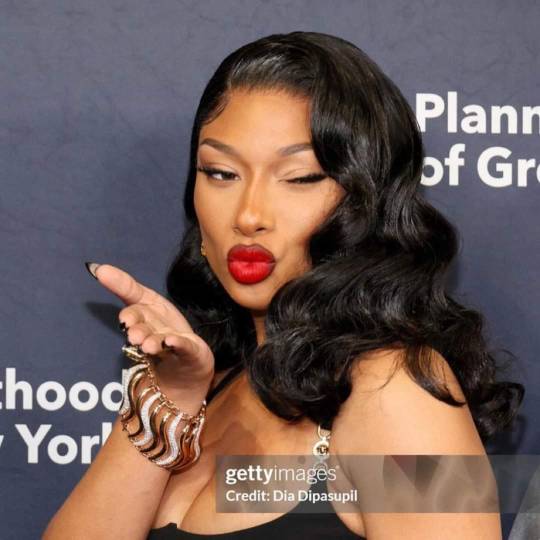


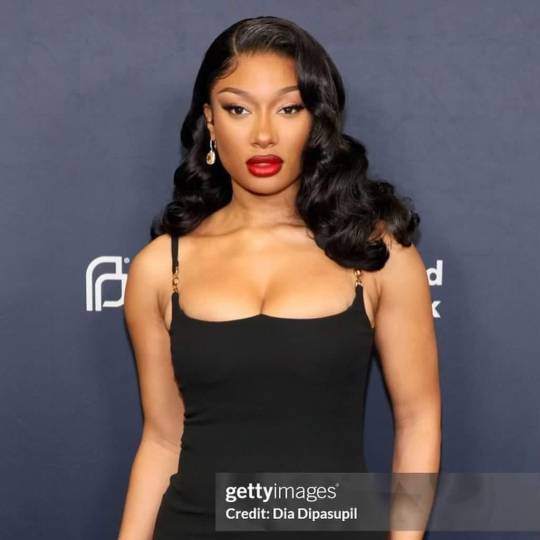

Megan Thee Stallion at Planned Parenthood of Greater New York’s Spring Into Action Gala. She was honored with the Catalyst for Change Award.
#megan thee stallion#meg thee stallion#thee stallion#planned parenthood#black girl moodboard#black girl aesthetic#soft black girls#soft black women#black girl magic#black women magic#black girl joy#black girls winning#black girls rock#black women luxury#black girl luxury#black girl beauty#beautiful black girl#black women beauty#beautiful black women#black women in luxury#black girls in luxury#black women moodboard#black women aesthetic#black women matter#feminine beauty
145 notes
·
View notes
Text

Debrah Daniels has been held in jail for 4 months with multiple charges while her granddaughters attackers have remained free with no repercussions. She has NOT received any help or support from her family outside of her two daughters and granddaughter. Our goal is to get Ms Daniels story heard and seen by all to put pressure on the courts for their overcharge on Ms Daniels in an act of self defense. Ms Daniels is set to go to trial August 28th. She needs your help, her family needs your help, please like, comment, and share to show Ms Daniels that she’s not alone and that her life, freedom, and protection of her family matters!
Full case details are posted across all platforms, please help get this story heard! We need #justice4debrahdaniels. She misses her family and her family misses her.
Tiktok: justice_4_debrah_daniels
Instagram: justice4debrahdaniels
Twitter: @justice4debrah
Facebook:
#justice4debrahdaniels#free Debrah daniels#say it til it’s backwards#black lives matter#black lives are important#blacklivesmatter#black women matter#black women#protect black women#say her name#please boost this#please help#please share#tiktok#instagram#facebook#twitter#black twitter#black tumblr#black people#black community#activism#activist
61 notes
·
View notes
Text
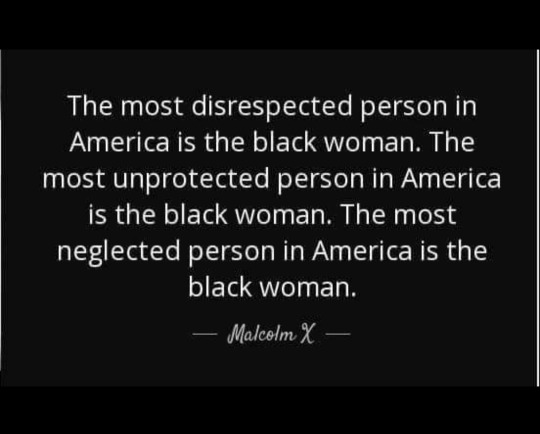
#malcolm x#black tumblr#black history#black literature#black history is american history#civil rights#black excellence#black community#civil rights movement#blackexcellence365#black girl magic#strong black women#black women matter#black archives#black art#black beauty#black love#beautiful black women#black girls of tumblr
290 notes
·
View notes
Text
By Kim Ives
Maude Leblanc, the longest-serving member of the socialist weekly Haïti Progrès, died on Jan. 25, 2024, at the age of 69.
Born Aug. 31, 1954, in Port-au-Prince, she spent most of her life living outside of Haiti but always devoting herself to radical social change in her home country.
#maude leblanc#Haiti#Haïti Progrès#socialism#communist#revolutionary#journalist#immigrants#Black Women Matter#NYC#Struggle la Lucha
15 notes
·
View notes
Note
What's your opinion on men of color and George Floyd?
I don’t have any specific opinion on men of color. They‘re oppressed on the axis of race/ethnicity, which doesn’t change the fact that they‘re not exempt from being misogynistic and oppress women. It‘s also not a secret that many of them are extremely violent towards women of color although they experience the same racism on top of misogyny, and towards women in general, although most people don’t dare to say it out loud.
George Floyd is a victim of racist police violence, and what was done to him is definitely a tragedy and big injustice. The public outcry is justified, for sure. No one should be discriminated, abused or get murdered for their skin colour.
As a person, however, he certainly wasn’t someone to look up to, so he‘s not a "hero". After all, he held a pregnant woman at gunpoint (even if she wasn’t pregnant, that‘s typical male violence) and surely was misogynistic in one way or another on top of it as well.
#women deserve better#radfem#radblr#radical feminism#idk what anon wanted to achieve with this question#black lives matter#anti racism#black women matter#global marjority women#male violence#fight patriarchy
34 notes
·
View notes
Text
Black women deserve all the world's roses, but all we've given them are the thorns. Black women deserve better.
32 notes
·
View notes